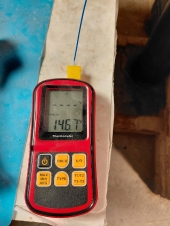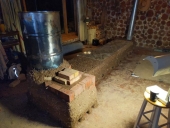


paul wheaton wrote:updated chrome, no change. Bounced chrome. No change. Which makes sense because the other two browsers are having the same problem.
Bounced my o/s (it has been running non-stop for several weeks).
Now it works.

Caitlin Steve wrote:I’m one of those noobies and maybe to give context for you noticing that trend… I’ve seen permies on Reddit/google/chatGPT. Basically anytime someone asks “where can I find off grid singles” the interwebz sends them here. That’s how I discovered permies and why I don’t have much posting history. I’ve been learning a lot through the different forums but feel too novice to contribute to the conversations. It’s hugely educational for me though. The singles forum was just what got me
in the door and I’m sure in time I will have great contributions to share but it can be intimidating for someone with less experience than all these permaculture gods and goddesses out here sharing all the cool things that are so fun for me to be exposing myself to. It’s a whole new world and I feel like that’s a mission everyone here shares- community and converting people to a better way of life and the singles forum is a great introduction

thomas rubino wrote:The tighter the seal the better it will work.
You could fold up some foil to cover the feed and place your firebricks over that.
I suspect both piped mass and a strat chamber are very similar in heat loss, if allowed to draft.
A piped mass might flow better, but by volume, it is tiny,
A strat chamber is huge in comparison.
Ultimately, both rise through a vertical chimney pipe.



Kendal Webster wrote:I'm still debating where to place the exhaust. With any luck I'll start a layout using tape tonight. This will help my visual brain see things better. Also another chance for feedback from the experts here before I start buying materials.
Your picture showing exhaust going up at an angle gives some extra ideas, but the very central part of the dome will not be an option, but any point up to where the loft will eventually go is available. We will see how it all comes together in the next several weeks... or as long as it takes!!!



thomas rubino wrote:
Shorty is a superior design, with more versatility and lower costs.

Peter van den Berg wrote:
Regarding your end question: yes it is, provided the calculation is done in a proper way. See the space above the riser as an imaginary ring. Think about it this way: the gases, rising out of the riser need to go through a 180 degrees bend in order to stream down. When this ring's circumference, multiplied by its height is a figure that is twice as large as the riser's cross section area, then it's about the right size. Just by giving the gases ample space to round the bend without too much friction means a possible pinch point isn't there at all.
The same thing happens at the exit, the distance between the floor and the end of the pipe works the same way, although the change in direction is just about 90 degrees since most of the colder gases stream along the floor. So, in theory, the surface area of that imaginary ring should be at least 1.5 times as large as the exhaust pipe.
Calculating... the 8" pipe's csa is 50.26 sq. in. So, the imaginary exhaust ring's surface area should be at least 75.4 sq inch. Devided by the circumference gives the height of the ring. In your case, that would be 3" as the minimum distance from the floor, provided the exhaust pipe is free all around. As said before, the depression might be a negative factor.